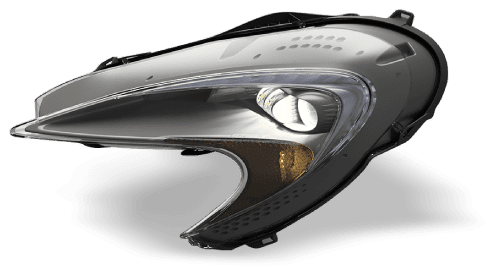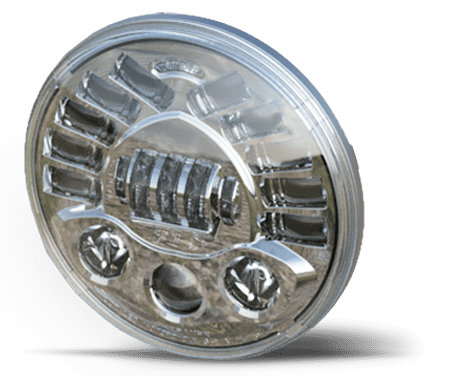
Terms & Definitions
Common lighting terms & definitions
AC
An acronym for alternating current. Alternating current is a type of current that continuously reverses its direction.
Amp
An abbreviation for ampere. An ampere is a standardized measure of electrical current.
CE
An acronym for the French translation of “European Conformity.” The CE mark is placed on products sold in Europe which have met safety, health, and/or environmental requirements.
Class I
Class I is a warning light SAE classification for lights that have a minimum of 4 times the light intensity of a Class II warning light. Examples of Class I warning light applications include emergency vehicles such as police, fire and ambulance. Classification system for vehicle warning lights established by the Society for Automotive Engineers (SAE).
Class II
Class II is a warning light SAE classification for lights that have a minimum of approximately 2.5 times the light intensity of a Class III warning light. Examples of Class II warning light applications include utility vehicles that work along roadsides.
Class III
Class III is a warning light SAE classification for lights that have approximately 40% of the minimum intensity of Class II warning lights. Class III products are typically used inside of buildings where there is little or no ambient sunlight. An example of a Class III warning light application is a forklift strobe light.
Color Temperature
A characteristic of visible light measured in units of absolute temperature on the Kelvin scale. With respect to lighting, a higher color temperature that more closely resembles a mid-day sun (6,500 K) will cause less user fatigue than a light that produces light resembling dusk or dawn (2,500 K). More on measuring the correlated color temperature (CCT) and the color rendering index (CRI).
Current
The flow of electrons through a conductor.
DC
An acronym for direct current. Direct current is a type of current that only goes in one direction. DC is typically used in most vehicular electrical systems.
Dedicated Voltage
A term used to describe a light that operates on a single voltage (ex. 12V DC).
DOT
An acronym for the Department of Transportation. DOT-compliant means that the lighting meets section 108 requirements of the Federal Motor Vehicle Safety Standards (FMVSS). These standards regulate all automotive lighting, signaling, and reflective devices in the United States of America.
Meeting DOT lighting standards guarantees your lights are federally compliant in the United States for visibility, durability, and reliability to secure the safety of others.
Driving Light
A focused, intense beam of light good for illuminating the stretch of road directly in front of the vehicle.
DRL
An acronym that stands for daytime running lamp. Headlights that include DRL in their design will automatically switch on the daytime running lamp when the vehicle is moving forward, emitting a white light to increase the visibility of the vehicle during daylight conditions.
ECE
An acronym for the Economic Commission for Europe. The ECE, established under the United Nations, has established uniform regulatory standards for vehicle design which include vehicular lighting.
To be ECE-compliant guarantees your lights are compliant in the European Union and in non-European countries that have adopted ECE Regulations for visibility, durability, and reliability. View our list of Regulatory Standards.
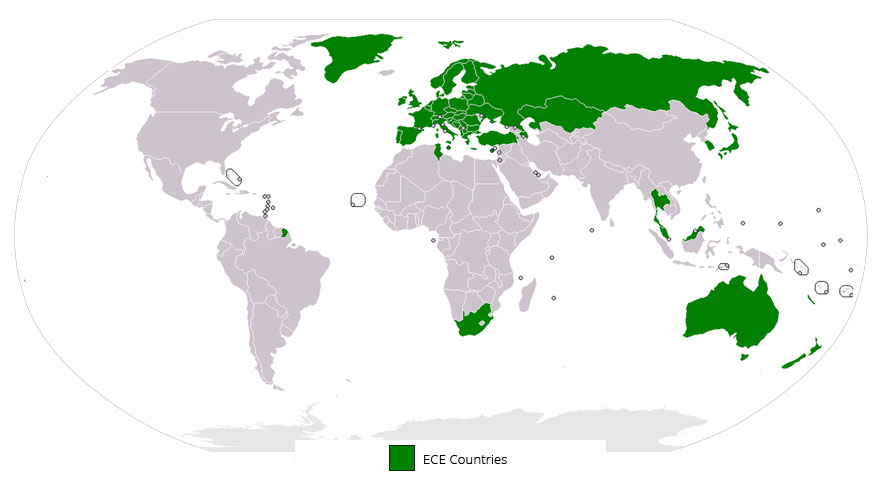
ETL
An acronym for Electrical Testing Laboratory. ETL is an independent company that specializes in electrical product safety testing.
EMI
An acronym for electromagnetic interference. Electromagnetic interference is a disturbance on an electrical circuit which can interrupt, obstruct, degrade, or limit the circuit’s performance.
Effective Lumens
A measure of the actual output of a light. The Effective Lumen output is measured using a photometric testing device and takes into consideration electrical and optical losses, so it is a better representation of the useful visible light that is produced. Read how to calculate effective lumens.
FMVSS 108
An acronym for the Federal Motor Vehicle Safety Standard 108. This standard was issued by the NHTSA and governs vehicular lighting requirements in the United States.
Filament
The part of an incandescent light that is used to emit light.
Flood Beam Pattern
Offering a wider, short distance spread of light for greater visibility along the horizon.
Fog Light
A wider, low spread of light that reduces reflection from water or snow and increases short-range visibility.
FP
An acronym that stands for front position lamp. This part of the headlight provides added visibility of your vehicle to other drivers, particularly helpful for nighttime visibility while parked. Front position lighting can also be referred to as “parking lights” in the US and Canada.
Halogen
Halogen lights feature a tungsten filament contained within a glass bulb filled with halogen gas. These lights can operate at higher temperatures than standard incandescent lights of similar power without loss of operating life and also feature a higher color temperature.
Harmonized
When used in terms of vehicular lighting products, this term refers to shared or common regulatory standard requirements between different parts of the world (ex. ECE and SAE).
Homologated
When used in terms of vehicular lighting products, this word refers to the conformity of a light to all European standards such that it would be approved for use throughout all of Europe.
HID
An acronym for “high intensity discharge.” HID lights create their light through the creation of an electric arc between two tungsten electrodes housed within a tube filled with gas and metal salts. When the electricity arcs, the metal salts evaporate and form a plasma which produces intense light and reduces the power consumption. HID lights burn brighter, last longer, and have a higher color temperature compared to halogen or incandescent lights.
IP Rating
The IP Code outlines a system of classification for the protection of electrical enclosures (including lights) against the intrusion of foreign bodies (ex. dust, tools, moisture). Learn more about IP Ratings.
Incandescent
Incandescent lights are the traditional lighting technology that most of us are familiar with. In vehicular lighting, there are two main styles of incandescent bulbs: bayonet base (ex. 1156 or 1157) and wedge base (ex. 3056 or 3157). While incandescent lights are typically the least expensive, they are also the least efficient and shortest-lived of the lighting technologies.
LED
An acronym for light emitting diode. LEDs are a relatively new lighting technology that create light by passing electricity through one plate to another. This type of light is more efficient, longer-lasting, and has a higher color temperature than halogen, HID, or incandescent lights. The fact that LEDs do not have breakable bulbs or fragile filaments makes them an excellent choice for applications where shock and vibration are present.
Lens
An optical element of a lamp that is engineered to either converge/diverge light and provide protection.
LHT
LHT means “Left Hand Traffic,” referring to which side of the road a driver uses. For instance, a driver in the UK is Left Hand Traffic and would use two LHT lights. Do you refer to it as RHD (right hand drive)? RHD = LHT (left hand traffic)
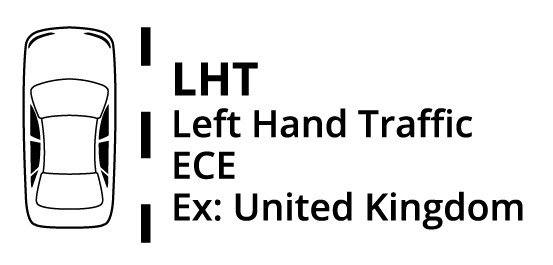 | 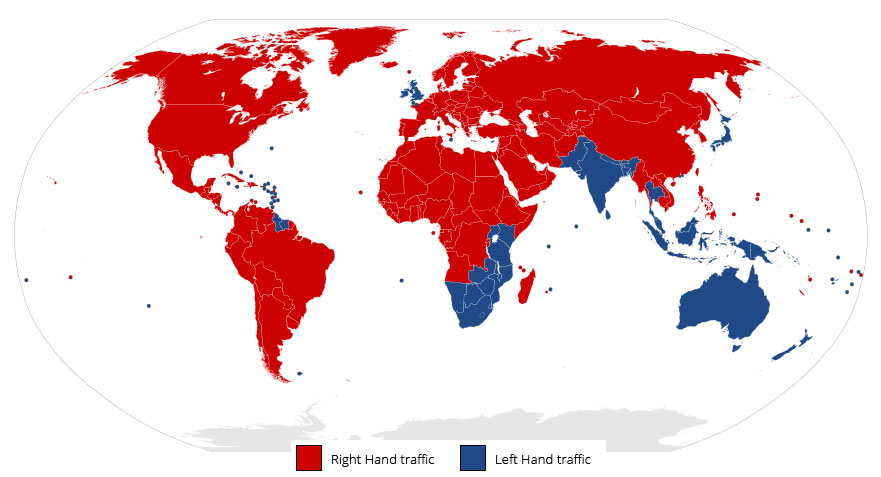 |
Lumen
A measure of the power of light as perceived by the human eye. In the world of vehicular lighting, it is of particular importance to distinguish between raw and effective lumens.
Lumens per Watt
A measure of a light’s efficiency that is calculated by taking the light output (measured in Lumens) and dividing by the power consumption (measured in watts). The larger the Lumens per watt statistic, the more efficient a light is.
Multi-Voltage
A term used to describe a light that operates on more than one voltage (ex. 12-48V DC). Having a light that is multi-voltage can be helpful to OEMs because it allows them to use that light in multiple applications without having to use multiple SKUs.
NHTSA
An acronym for the National Highway Traffic Safety Administration. The NHTSA is the branch of the United States DOT that is charged with creating vehicular safety standards. Read more about the NHTSA’s vehicle regulations for trucks, trailers, buses and other multi-passenger vehicles.
OEM
An acronym for original equipment manufacturers.
Optics
The part(s) of a light that collect, reflect, and/or refract light so as to create a beam pattern.
Pencil Beam Pattern
Typically used when mounting driving lights above the hood, offering an extremely narrow beam of light to reduce glare and reflections.
Photometry
The science of the measurement of light in terms of its perceived intensity to the human eye.
Raw Lumens
A measure of the theoretical output of a light. In the case of LED lights, this figure is computed by multiplying the manufacturer’s lumen rating for the LED by the number of LEDs in the light. Raw Lumens is not representative of the actual light output because it does not take into account the electrical and optical losses that impact all lights. Read how to calculate raw lumens.
RHT
RHT means “Right Hand Traffic,” referring to which side of the road a driver uses. For instance, a driver in Canada is Right Hand Traffic would use two RHT lights. Do you refer to it as LHD (left hand drive)? LHD = RHT (right hand traffic)
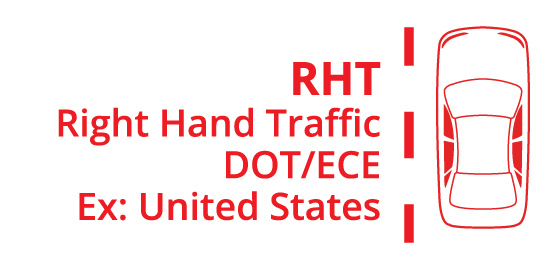 |  |
SAE
An acronym for Society of Automotive Engineers. View our list of Regulatory Standards.
Sealed Beam
A type of light that contains a reflector, light source and permanently attached glass lens as a single assembly.
Spot Beam Pattern
A focused, long-range spread of light for focused illumination.
Trapezoid Beam Pattern
Offering a narrow, long distance spread of light for greater visibility along the horizon.
UL
An acronym for Underwriter Laboratories. UL is an independent product safety certification organization.
About J.W. Speaker
J.W. Speaker is focused on developing innovative, high-performance vehicular lighting solutions for OEM and aftermarket customers around the world. Specialized in LED and other emerging lighting technologies, J.W. Speaker is proud to design, manufacture and assemble products in Germantown, Wisc. For more information, contact J.W. Speaker at (800) 558-7288 or news@jwspeaker.com.

